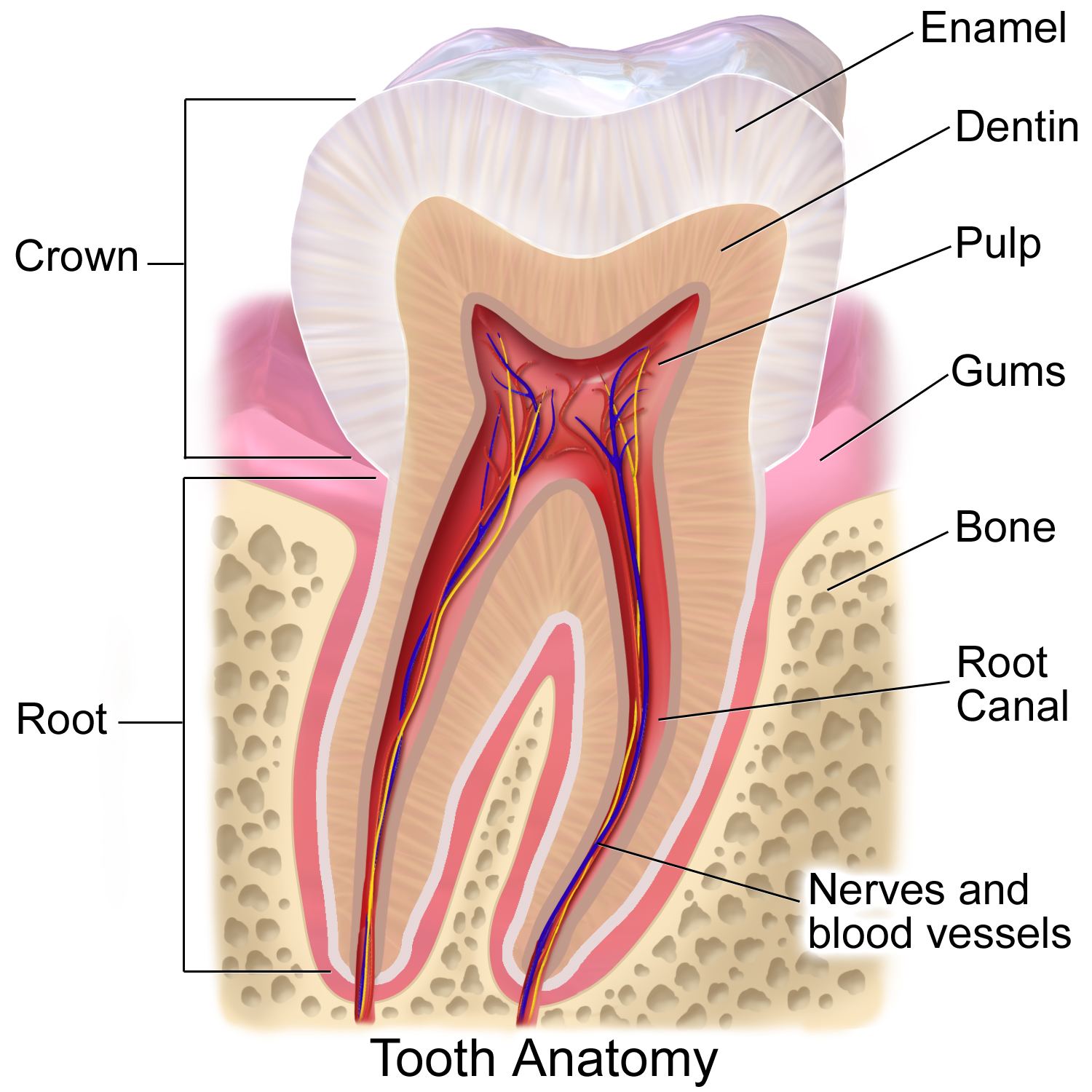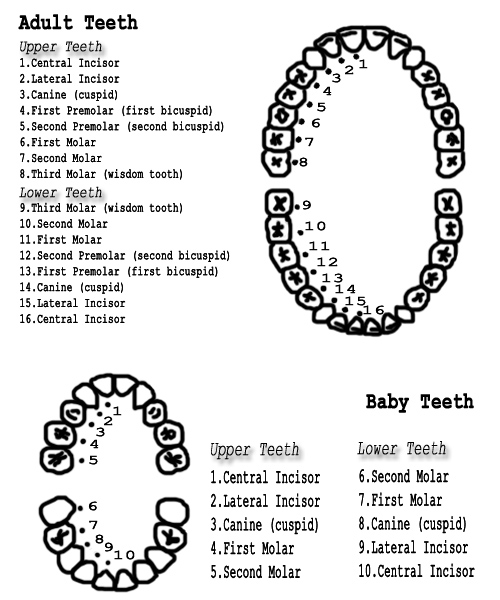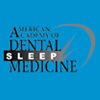What Is The Anatomy of the Tooth?
What are the parts of the tooth and what purpose do they serve?

Crown
The crown is the upper part of the tooth that becomes exposed after forming within the gums and growing into place. Natural crowns are made of enamel, but if a tooth becomes damaged or malformed, a dentist can repair it with an artificial dental crown using advanced dental technology.
Root
The root refers to the bottom two thirds of the tooth which is embedded through the gums and into the jaw bone. Contained within it are the nerves and blood vessels, as well as the root canal. A small opening at the bottom of the root, called the apical foramen, allows the blood vessels and nerves into the tooth.
Enamel
The enamel is the hard coating on the surface of the crown. It can stain and change color as it comes into contact with all kinds of food and drink. A simple teeth whitening solution can help with most discoloration. Being both hard and brittle, enamel can be easily cracked or chipped. Unlike bones, the human body cannot naturally repair damaged enamel. If you suffer an injury to your teeth, you will likely benefit from a safe and effective dental procedure, such as a crown or a bridge.
Dentin
Beneath the outer shell of the enamel, we find the dentin. Dentin is a porous substance that makes up the majority of the tooth. If gum disease progresses into the dentin, you will need to see a dentist for gingivitis treatment. In addition to the enamel, dentin is also partly responsible for the coloration of your teeth.
Pulp
We find the pulp deeper inside the tooth, beneath the dentin. The pulp is a soft tissue that makes up the inner core of the tooth. The pulp cavity, an opening within the pulp tissue, houses the root canal, blood vessels and nerves.
Root Canal
The root canal is the opening within the pulp and inside the root that encases the nerves and blood vessels of the tooth. When infection or disease reach this part of the tooth, it can become very painful. A dental procedure will be necessary to protect your oral health.
Gums
Gums play an important role in keeping your teeth healthy and in place. If the gum lining starts to become loose due to gum disease, bacterial growth can develop to dangerous levels. Gum disease, also known as periodontal disease, can be effectively treated with safe, convenient laser treatment.
Labeled Diagram of Adult and Baby Teeth
Also see: Dental Conditions, How to Deal with Dental Anxiety
Contact Smiles By Dixon And Get your Teeth Cleaned Today
To learn more about dental health, contact Dr. Brad Dixon today.
How to Deal with Dental Anxiety














